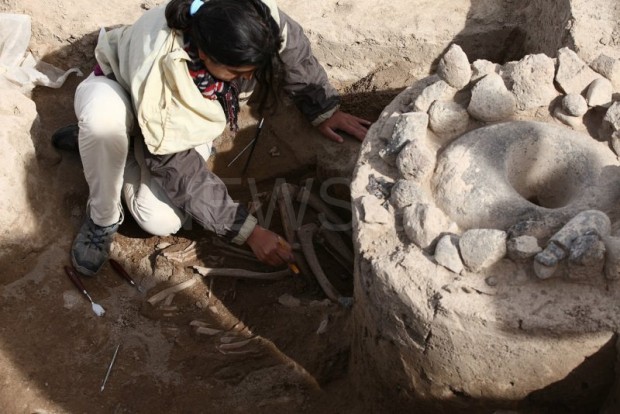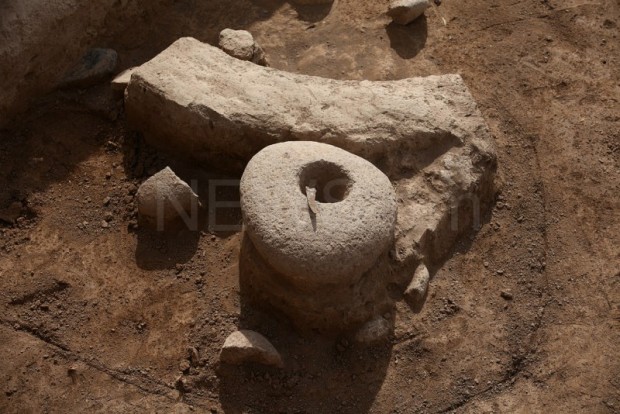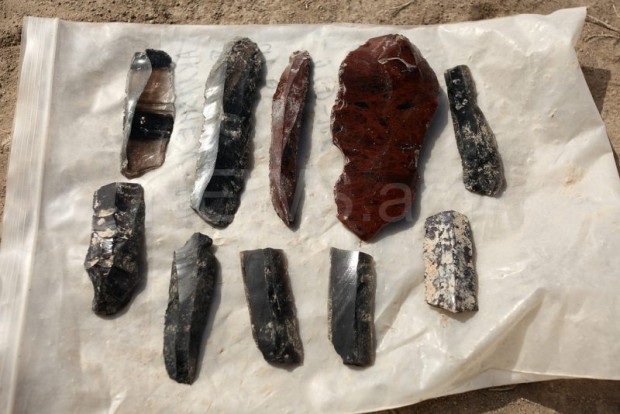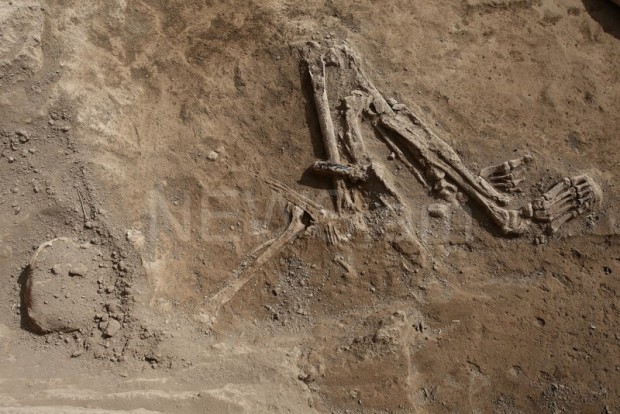Children who live in Aknashen like to run to the outskirts of the village. Driven by curiosity, they often climb the hill, where archaeological excavations of the ancient monument, dating to the Neolithic era, are being conducted. Explaining to them that the excavation area is a bad place for games can sometimes be very difficult, says Ruben Badalyan, the head of the expedition, the head of the earliest archeology department in the Institute of Archaeology and Ethnography under the National Academy of Sciences of Armenia (photos).
According to him, studies of this unique settlement began in 1998; later the process has been suspended and resumed as early as 2004. Although the hill is small, says Badalyan, the height of the cultural layer, formed as a result of successive settlements, is more than 5 meters.

There was revealed a huge amount of information during excavations, which certify that the territory of Ararat valley was occupied by a lake. It was formed after a volcanic eruption, as a result of which the watercourse of Araks River got covered with lava sediments.
Later, the water level of the lake gradually lowered, and in the first half of the 6 th century BC, the first Neolithic settlement, known in the territory of Ararat valley, was founded on this territory. "Everything known prior to this period mainly relates to cave shelters and temporary stays. But, here we deal with a sedentary settlement, which made the first attempts of construction and ceramic production, " says Badalyan.
As for who settled in this area in the early 6th century BC, it is too early to say, since there are no written sources that would allow to find out the language they spoke. However, it is already clear that it was a period, when continuous colonization began.

"Thus, we deal with a beginning of a very long period, which ultimately led to the creation of our society," adds Badalyan.
According to him, among the finds in the main place made primarily tools made of bone and obsidian, which had been extracted from the ridge of Gegham mountain. The excavated jewelries, such as barrettes, fragments of chains, and bone spoons, are worth of attention as well.

"We can conclude that humans populated in that territory had a feeling of aesthetic beauty. They adorned themselves, their clothes, and tools. We even have an evidence that they used make-ups,” says Badalyan.
The most valuable finds, adds Badalyan, are perhaps those, that inhabitants of Aknashen contacted with people, who carried Middle Eastern cultures. "We have examples of painted pottery, which obviously came from Syria, Mesopotamia. There are findings of sea shells, which point to the contacts - even though transit contacts - with the population of the Red Sea and the Mediterranean coasts. In other words, we can say that in the 6th century BC there were developing cultural and economic ties, " he stressed.

The settlement was abandoned in the middle of the 6th millennium BC. It is difficult to provide certain reasons, says Badalyan, but people could move due to social or political circumstances. Excavations in Aknashen will continue for about 10 years: to be exact, unless archaeologists get to the level at which the settlement was established.